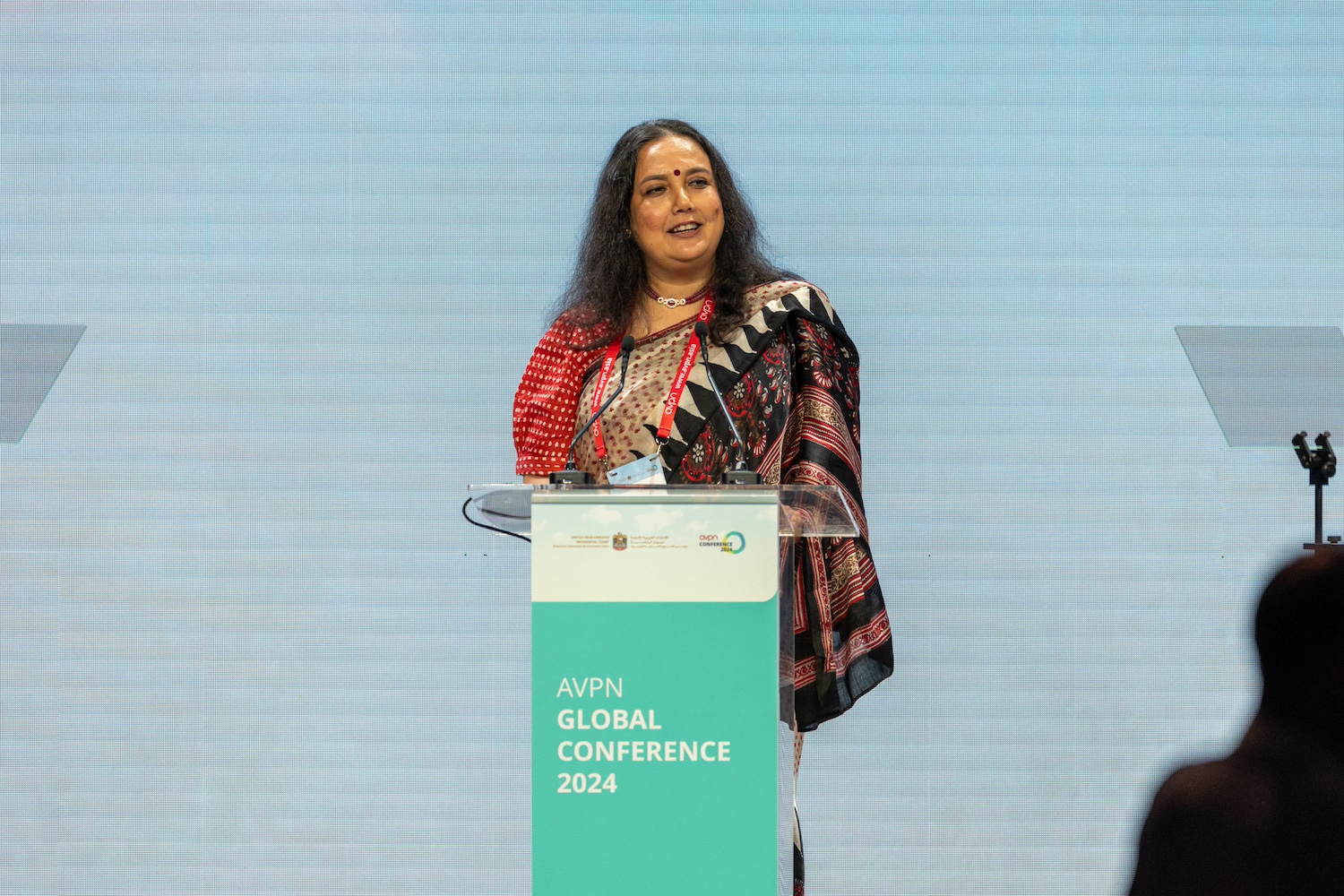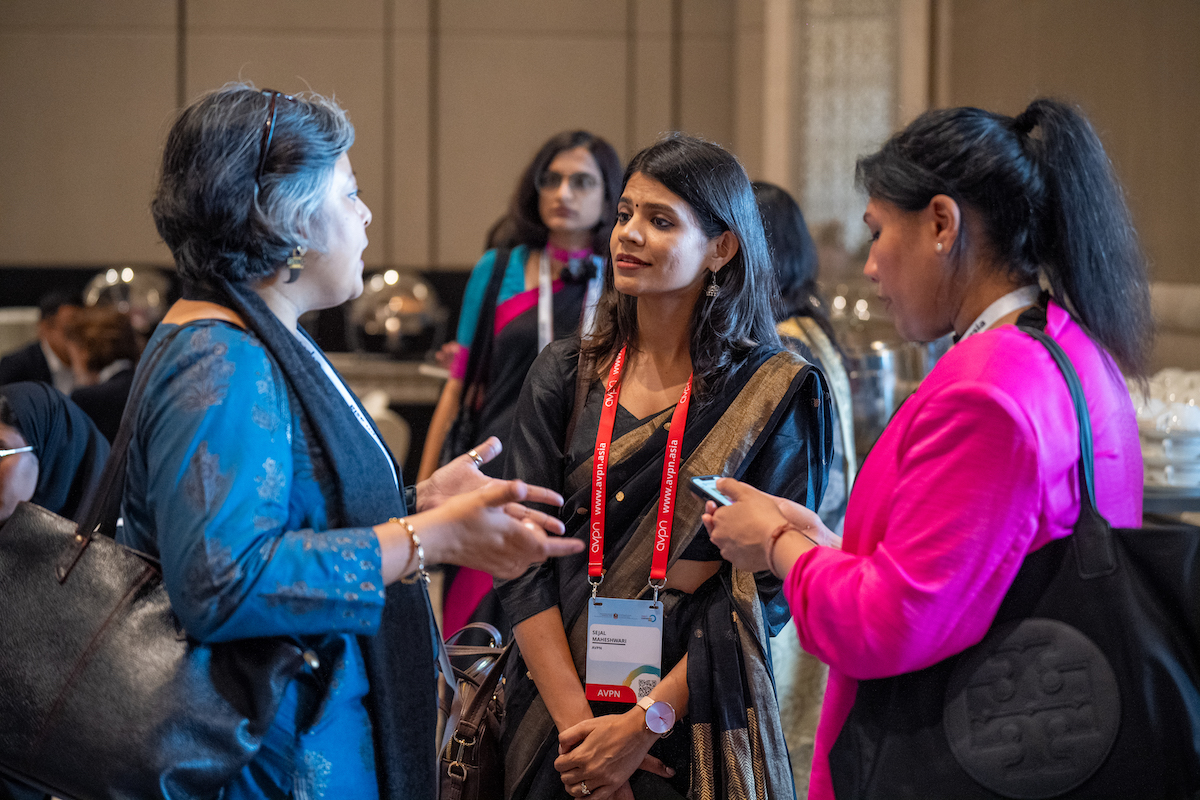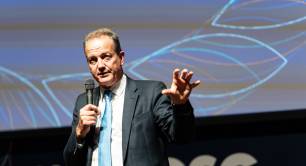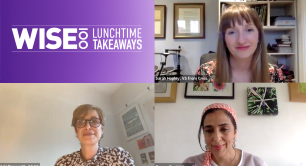Why the impact world must not ignore Asia: Ten takeaways from AVPN's Global Conference 2024
Asia is a region of both massive potential – and enormous need. So what role should the global impact community play to address the issues and realise the opportunities? We returned from AVPN's 2024 conference with some key insights.
From the size of its population and scale of its newfound wealth, to the extent of its suffering from the climate crisis, conflict and other challenges, the region of Asia is a place of both massive potential – and enormous need. So what role should the global impact community play to address these issues and realise the opportunities that exist? At the annual conference of Asia’s social investors’ network, AVPN, which was held from 23 to 25 April, 1,500 investors, philanthropists, policymakers and others gathered at two beachside venues in Abu Dhabi to dive into some of the key questions around the theme of 'One Asia, One Future'.
Which themes dominated the conversations, both in the staged plenaries and during the coffee breaks? Who said the most interesting things? What should we watch out for in the coming months and years? Pioneers Post was there to find out.
1. We can’t ignore Asia, part 1. Asia is a significant part of a world facing complex, interconnected challenges: 60% of the global population lives in Asia and its poorest countries are facing the worst effects of the climate crisis. “If Asia doesn’t meet the SDGs, nobody meets the SDGs,” emphasised AVPN CEO Naina Subberwal Batra (pictured below).
As several speakers pointed out, there’s a massive and growing funding gap to achieve the UN Sustainable Development Goals in developing countries. “This gap is more than a figure, it’s a symbol of missed opportunities and unfulfilled promises. This massive funding gap issues an urgent call to all capital owners and allocators to unite and create impact at scale,’ said Vikas Arora, AVPN’s chief of impact investing.

If Asia doesn’t meet the SDGs, nobody meets the SDGs
2. We can’t ignore Asia, part 2. While there is enormous need for impact investment in Asia, there is also enormous potential. “Asia is the economic engine of the world,” said Gabriel Leung, executive director of charities and community at the Hong Kong Jockey Club Charities Trust. “We need to start using that wealth better.”
However, Asia’s philanthropists and impact investors are still learning. “Countries in the West that have been rich for centuries have a history of giving,” pointed out Vikrant Bhargava, founder of India’s Veddis Foundation and chair of the Founders Pledge, which advises entrepreneurs on their giving. He said trust to build collaborations between donors, governments and others was lacking. “The ego-system gets in the way of building the ecosystem,” he said.
The ego-system gets in the way of building the ecosystem
3. The definition of Asia (at least from AVPN’s point of view) is broadening. This year’s AVPN annual conference was held for the first time in what AVPN is referring to as “West Asia” – or the Middle East – and the conference theme was “One Asia, One Future”. “We believe West Asia is an integral part of Asia, with a shared common history and a common culture” said Subberwal Batra as the event opened. The event took place under the patronage of Sheikh Theyab bin Mohamed bin Zayed Al Nahyan, chair of the UAE’s International Humanitarian and Philanthropic Council, and several members of the UAE’s ruling families attended. They were keen to emphasise their role as convenors on the global stage. For example, Sultan Al Shamsi, Abu Dhabi’s assistant minister of foreign affairs for development and international organisations affairs, said, “This year’s AVPN conference is the first to be held in the Middle East, bringing together diverse stakeholders to mobilise capital, partnerships, and momentum towards social impact across Asia. Its debut in Abu Dhabi reflects the UAE’s legacy and leadership in global development and the country’s unique ability to convene and unite diverse partners in the pursuit of shared prosperity.”
During the event, UAE organisations announced more than US$150m in funding commitments, including plans by the Khalifa Bin Zayed Al Nahyan Foundation to support young entrepreneurs in the least developed countries with US$27m.
4. The funds held by Asia’s faith-led givers could be transformative. One delegate from a Christian organisation was at the event to fundraise, citing a worldwide difficulty among Christian-led groups to raise money, while, in contrast, several speakers highlighted how Islamic finance approaches naturally fit in with the SDGs and community development. The AVPN’s chief of impact investing, Vikas Arora, emphasised the “critical role” of Islamic finance going forward.
In a report released at the event, How Values and Beliefs Shape Giving in Asia, AVPN pointed to research by Said Business School at the University of Oxford, which estimated faith-aligned asset managers across Christian, Islamic and Dharmic faiths, collectively managed total net assets worth US$5tn in 2022, and that only 3% of that, or US$150bn, was committed to creating impact.
5. The phrase ‘venture philanthropy’ is falling out of favour. AVPN is now officially known only by its acronym, rather than its original name of the Asian Venture Philanthropy Network. This follows its sister body in Europe changing its name in November last year from EVPA (originally the European Venture Philanthropy Association) to Impact Europe. AVPN continues to describe itself as “the largest network of social investors in Asia”, and focuses on what it calls the whole “continuum of capital”, from pure philanthropy or impact-first investments, through venture (or strategic) philanthropy, to ethical investments which pursue financial returns above impact.

6. The definition of impact investing still needs more clarity. The second day of the AVPN conference, like last year, was devoted to discussions about impact investment. However, some conversations muddled what some experts would refer to as ESG investing with impact investing.
7. Impact measurement continues to cause headaches. The Hong Kong Jockey Club Charities Trust’s Gabriel Leung highlighted the “proliferation of ways to measure impact”. There are so many that “you don’t know which matters or doesn’t”, he said. The result is that “you end up with which is more heart wrenching – which elicits the more tears, sadness or joy will get the money”. “We all need to share best practice about what works and how can you tell what’s working,” he urged.
Rajiv Lall, founding partner of Mondiale Impact, predicted that AI would help. “I think AI is going to change the methodology for how we are going to capture and measure impact, but that’s for the future,” he said. “For now, it’s a question of quantifying purposeful goals that go beyond that standard reporting system.”
Which elicits the more tears, sadness or joy will get the money
8. How best to support women – as investees and investors – remains under discussion. A post-lunch breakout session on “propelling women’s leadership in impact investing” attracted a big crowd, including a few valient men. Speakers shared ideas on how to better support women in impact investing including the role of mentors, the importance of role models and dealing with imposter syndrome.
Brigit Helms, executive director for the Miller Center for Social Entrepreneurship at Santa Clara University, ran a lively workshop pointing to how “the brilliance bias” – the tendency for people to think of brilliance as a male trait – still holds back women entrepreneurs who are more often asked about risk by potential investors while their male counterparts are asked to wax lyrical about their vision for growth. “The brilliance bias is out there. It’s a deep seated driver of gender inequality,” said Helms.
9. ‘Analysis paralysis’ can hold back investment in tackling climate change, according to some. Too often focusing on “catastrophic narratives” puts a brake on action, said Samir Suleymanov, head of climate finance for COP28, which was held in Dubai in late 2023. We need instead “catalytic optimism”. “There is a better future for the planet and the economy,” he said.
Speakers also highlighted the opportunities in Asia for climate finance, including the fact that the Global South doesn’t have to retrofit old technologies to be greener, but can start being low carbon from the beginning.
![]()
10. The conflict in Gaza wasn’t mentioned as much as many people hoped. Although a call for a ceasefire in Gaza was made during the opening press conference, there was very little discussion about the conflict that was occurring so close to the event, and the potential role for the impact community in it. This was a “glaring omission”, commented one delegate.
As yet, there is no news about where next year’s AVPN Global Conference will be held. In a cryptic response to another journalist at the event, Subberwal Battra said: “At this point, we’re looking at potentially north east Asia, south Asia and south east Asia, so I don’t have a fixed answer.”
Photos courtesy AVPN
Thanks for reading our stories. As an entrepreneur or investor yourself, you'll know that producing quality work doesn't come free. We rely on our subscribers to sustain our journalism – so if you think it's worth having an independent, specialist media platform that covers social enterprise stories, please consider subscribing. You'll also be buying social: Pioneers Post is a social enterprise itself, reinvesting all our profits into helping you do good business, better.



